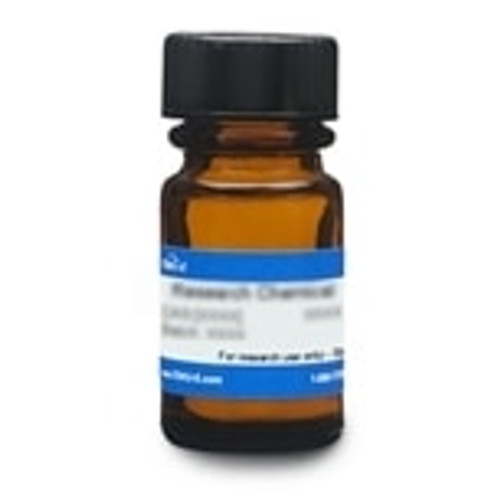Tosufloxacin Tosylate is a fluoroquinolone antibacterial agent. It is a small organic compound and racemate, comprising equimolar amounts of (R)- and (S)-tosufloxacin tosylate. It can act as a mimetic of the neural glycan LewisX (LeX), thus it can influence distinct signal transduction pathways involved with diseases of the nervous system.
| Mechanism of Action | Tosufloxacin inhibits bacterial DNA gyrase (topoisomerase). |
| Spectrum | Effective against Gram-positive and Gram-negative bacteria inlcuding anaerobic bacteria, Chlamydia, and Mycoplasma. |
| Microbiology Applications | Tosufloxacin is commonly used for in vitro microbiological antimicrobial susceptibility tests (panels, discs, and MIC strips) against Gram-positive and Gram-negative microbial isolates. Medical microbiologists use AST results to recommend antibiotic treatment options. Representative MIC values include:
For a representative list of Tosufloxacin MIC values, click here. |
| Eukaryotic Cell Culture Applications | LewisX (LeX) is an abundantly expressed neural glycan. Using an ELISA assay with LeX-specific monoclonal antibodies (L5 and SSEA-1), authors screened a library of small organic molecules. Tosufloxacin was found to be a mimetic compound that can mimic LeX both structurally and functionally, inhibiting antibody binding in a concentration-dependent manner. In nM concentrations, it can influence distinct signal transduction pathways, and enhance neurite outgrowth and promote neuronal survival of cultured mouse cerebellar granule cells. This is a powerful tool for studying the functions of LeX and its effects in acute and chronic nervous system disease models (Theis et al, 2018). Tosufloxacin solution was applied to three corneal cell lines (rabbit corneal epithelium, bovine corneal epithelium, and rabbit corneal epithelium) and one conjunctival cell line (human conjunctival cells) and cell viability was assessed via MTT assay after 48 hours exposure. Cell viability scores were assessed as CVS50, which means the number of cell line with viability ≥50% in the presence of a 10-fold dilution of the antibiotic solution) were higher with Tosufloxacin compared to dibekacin, levofloxacin, norfloxacin, gatifloxacin and moxifloxacin. The toxicity of the compound was dependent on the pharmaceutical components of the solution (Ayaki et al, 2010). |
| Molecular Formula | C19H15F3N4O3 ∙C7H8O3S |
| References | Ayaki M, Iwasawa A, Soda M, Yaguchi S and Koide R (2010) Cytotoxicity of five fluoroquinolone and two nonsteroidal anti-inflammatory benzalkonium chloride-free ophthalmic solutions in four corneoconjunctival cell lines. Clin. Ophthalmol 4:1019-1024 PMID 20922036 Cooper MA, Andrews JM and Wise R (1992) In-vitro activity of tosufloxacin, a new quinolone antibacterial agent. J. Antimicrob. Chemother. 29(6):639-647 Fukuda Y, Takahata M, Mitsuyama J (2006) Pharmacodynamic evaluation of tosufloxacin against Streptococcus pneumoniae in an Takahata M and Nishino T (1997) Antibacterial activities of tosufloxacin against anaerobic bacteria and the electron micrograph of its bactericidal effects. Chemother. 43(3):153-158 PMID 9142454 Theis T, Johal AS, Kabat M, Basak S, Schachner M (2018) Enhanced neuronal survival and neurite outgrowth triggered by novel small organic compounds mimicking the LewisX glycan. Mol Neurobiol. 55(10):8203-8215 PMID 29520715 |



